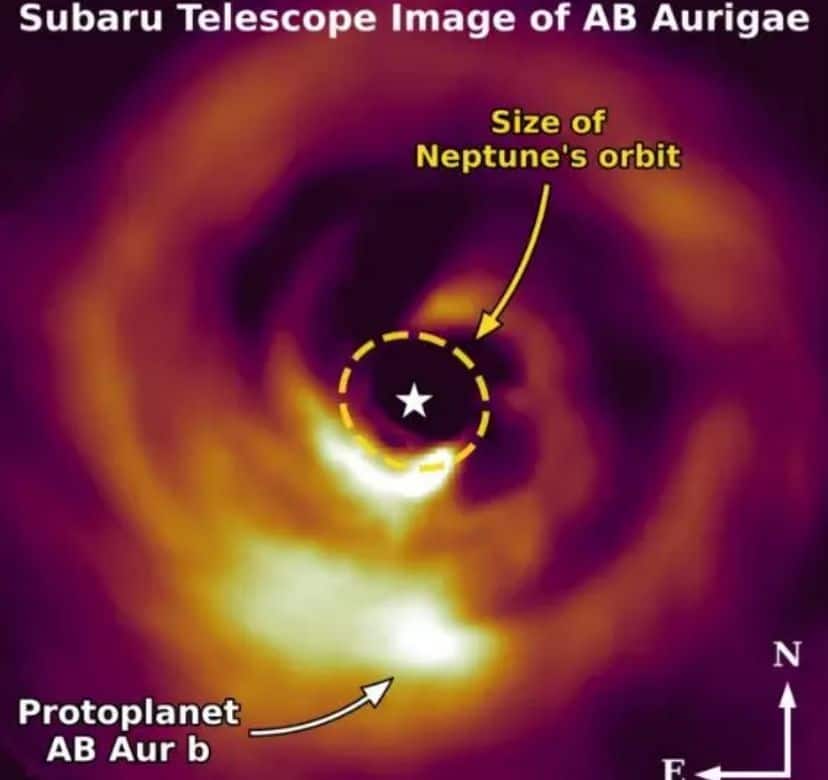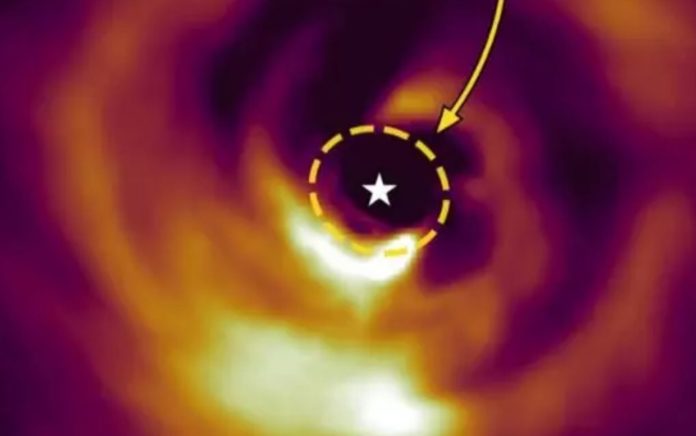A multinational scientific team has identified a new planet that is still in its infancy and has not yet emerged from the womb of matter where it is forming.
This is the newest protoplanet ever discovered. Its location and the structures of stuff around it hint that a different technique of planet formation is at work. This discovery, which was published in Nature Astronomy, may assist to understand the origins and properties of extrasolar planets that orbit other stars.
A massive gaseous Jupiter-like planet starts off as a rocky core in a protoplanetary disk orbiting a young star, according to the traditional model of planet formation. This core then gathers gas from the disk and expands into a massive planet.

While this concept works well for planets in our Solar System, it has difficulty explaining exoplanets discovered around other stars at distances far greater than Neptune’s orbit.
Because rocky cores are unlikely to form far from the central star, the formation of distant planets cannot be fueled by the buildup of cores. Outlying planets are thought to develop near the central star and travel outward, according to one idea.
However, new observations made with the Subaru Telescope’s extreme adaptive optics system, which allows it to take direct images of faint objects near brighter stars, reveal what appears to be a forming protoplanet at a distance of 93 astronomical units, more than three times the distance between the Sun and Neptune.
A simple model of starlight reflected off an aberration in the disk, as well as a model of a bare planet, cannot match the observations of this object, dubbed AB Aurigae. According to best-fit models, AB Aurigae is a young protoplanet that is still growing in a matrix of matter in the protoplanetary disk. Nearby spiral features in the disk are consistent with scenarios in which a planet emerges from the gravitational collapse of surrounding materials. This revelation has far-reaching consequences for both the many exoplanets that have been discovered and the overall theoretical model of planet creation.
“This study sheds new light on our understanding of the different ways planets form,” says Thayne Currie, lead author of the discovery paper.
Source: 10.1038/s41550-022-01634-x
Image Credit: Getty
You were reading: A prenatal planet discovered even before birth
